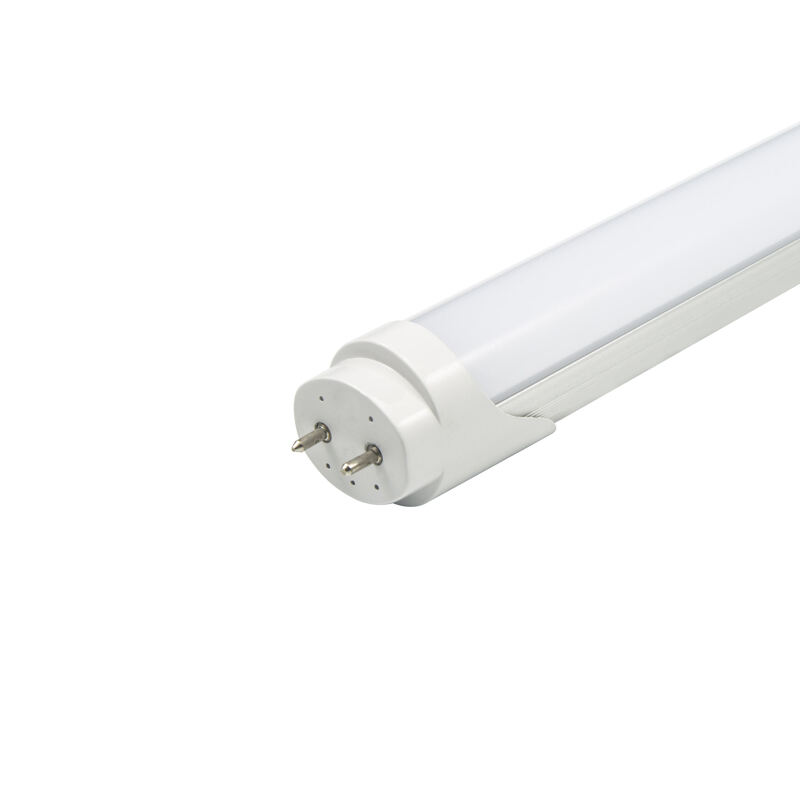What Are the Advantages of Switching to LED Tubes?
The shift to LED tubes is revolutionizing lighting across homes, offices, and industries. These energy-efficient alternatives to traditional fluorescent tubes offer a wide range of benefits, from cutting electricity costs to reducing environmental harm. By understanding the advantages of LED tubes, you can make an informed decision that saves money, supports sustainability, and enhances your space.
Significant Energy Savings
LED tubes are far more energy-efficient than fluorescent tubes, translating to lower electricity bills. While traditional fluorescent tubes convert only 40–60% of energy into light, LED tubes transform 90% of energy into visible light, with minimal heat loss. This efficiency leads to 50–70% less energy consumption compared to T12 fluorescent tubes. For example, replacing a 40W fluorescent tube with an 18W LED tube achieves the same brightness while slashing energy use by over 50%.
Brands like Philips are pushing boundaries with ultra-efficient LED tubes that save over 44% more energy than standard LEDs, with a payback period as short as four months. Over time, these savings add up: a commercial space switching 1,000 fluorescent tubes to LEDs could save thousands of dollars annually on energy costs.
Longer Lifespan and Reduced Maintenance
LED tubes outlast fluorescent tubes by 2–5 times, with typical lifespans of 50,000–100,000 hours (compared to 10,000–20,000 hours for fluorescents). For instance, a Philips LED tube with a 100,000-hour lifespan would last over 11 years if used 8 hours daily, requiring fewer replacements and maintenance disruptions.
This longevity is a game-changer for businesses. Retailers, warehouses, and schools no longer need frequent bulb changes, which saves time, labor costs, and the hassle of working at heights. Even in high-traffic areas like offices or hospitals, LED tubes reduce downtime and ensure consistent lighting quality.
Environmentally Friendly
LED tubes are a mercury-free solution, unlike fluorescent tubes, which contain 4–5 milligrams of mercury per bulb—a toxic substance that contaminates soil and water if improperly disposed of. By switching to LEDs, you eliminate this risk and support a cleaner environment.
Additionally, LED tubes have a lower overall environmental impact. A life-cycle assessment (LCA) found that replacing T5 and T8 fluorescent tubes with LED retrofit lamps reduces environmental impact by 44–61%, primarily due to lower energy use and mercury elimination. Innovations like recycled plastic LED tubes (e.g., Philips’ T8 tubes made with 40% post-consumer recycled plastic from fishing nets and water bottles) further reduce waste and promote circularity.
Superior Light Quality
LED tubes deliver bright, consistent light with excellent color rendering (CRI ≥80), making colors appear vibrant and true-to-life. Unlike fluorescent tubes, which often emit a harsh, flickering glow, LEDs provide flicker-free, uniform illumination that enhances visibility and reduces eye strain.
Color temperature options are also versatile:
- Warm white (2700–3000K): Creates a cozy, inviting atmosphere for homes or hospitality spaces.
- Cool white (4000–5000K): Ideal for offices or kitchens, boosting productivity.
- Daylight (5000–6500K): Mimics natural sunlight, perfect for retail or healthcare settings.
This flexibility allows you to tailor lighting to specific needs, improving both aesthetics and functionality.
Cost-Effective Over Time
While LED tubes have a higher upfront cost than fluorescent tubes, the long-term savings far outweigh the initial investment. For example:
- Energy savings: A 40W fluorescent tube running 10 hours daily costs ~$14.60/year (at $0.10/kWh), while an 18W LED tube costs ~$6.57/year—a 55% saving.
- Maintenance savings: With 5–10 times longer lifespans, LED tubes reduce replacement costs by 80–90%.
Commercial projects see even greater returns. Replacing 1,000 fluorescent tubes with Philips’ ultra-efficient LEDs could save over €57,000 annually and achieve full ROI in under five months.
Versatile and Easy to Install
LED tubes are compatible with most existing fixtures, making retrofitting straightforward. Many models are plug-and-play, working with existing ballasts, while others require a simple ballast bypass for optimal efficiency. This adaptability means you can upgrade lighting without costly fixture replacements.
For instance, T8 LED tubes fit seamlessly into T12 fixtures (with minor adjustments), and smart LED tubes offer wireless control via apps, enabling dimming, color changes, and scheduling. Brands like GE even offer shatter-resistant coatings for durability in harsh environments.
Innovations for the Future
The LED industry is constantly evolving, with new technologies enhancing performance and sustainability:
- Smart LED tubes: Features like music-sync modes, bio-rhythmic dimming (adjusting light to mimic natural daylight cycles), and voice control (compatible with Alexa or Google Home) are transforming lighting into an interactive experience.
- Recycled materials: Companies like Signify are using 40% post-consumer recycled plastic in LED tube casings, diverting waste from landfills.
- Lab-grown components: Innovators are exploring carbon-neutral LEDs and plant-based materials to further reduce environmental footprints.
Health and Safety Benefits
LED tubes contribute to better indoor environments:
- No UV/IR radiation: Unlike halogen or incandescent bulbs, LEDs don’t emit harmful ultraviolet (UV) or infrared (IR) rays, making them safe for sensitive environments like museums or healthcare facilities.
- Low heat emission: LEDs stay cool to the touch, reducing fire risks and improving safety in homes and workplaces.
- Mercury-free: Eliminates the need for hazardous waste disposal, protecting workers and ecosystems.
FAQ
Are LED tubes compatible with my existing fixtures?
Yes, in most cases. LED tubes are designed to fit T8, T5, and T12 fixtures. However, you may need to bypass the ballast for optimal performance. Check product specifications for compatibility details.
Do LED tubes require professional installation?
No—many LED tubes are plug-and-play, allowing DIY installation. However, if you’re unsure about wiring or ballast removal, consult an electrician.
Are LED tubes worth the upfront cost?
Absolutely. While initial costs are higher, LED tubes save 50–70% on energy and last 5–10 times longer than fluorescents, providing significant long-term savings.
Can LED tubes be recycled?
Yes. LED tubes are 95% recyclable, though current recycling rates are low due to complex material mixes. Look for certified recyclers or programs that handle e-waste.
Do LED tubes work in cold temperatures?
Yes. Unlike fluorescent tubes, LEDs perform reliably in extreme cold, making them ideal for garages, warehouses, or outdoor applications.
